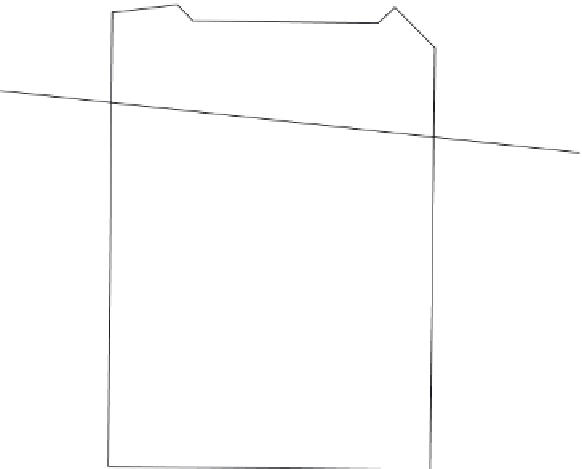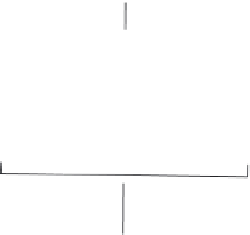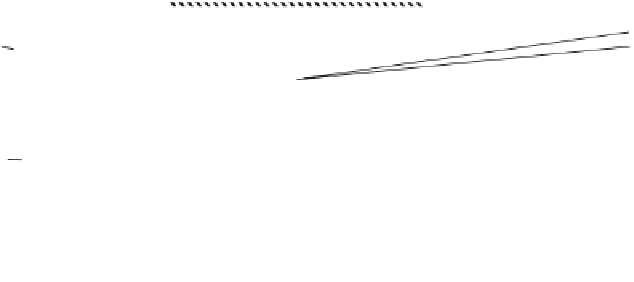Biomedical Engineering Reference
In-Depth Information
Diffracted light
2
1
Incident light
λ
D
Λ
1
X
Λ
2
Z
Ultrasound
L
Transducer
RF source
FIGURE 3.1
Bragg cell diffraction.
Note that the Bragg angle depends on the acoustic wavelength. The actual
mechanism of AO diffraction is explained by a momentum diagram in
Figure 3.2 [4]. The vector sum is
(3.2)
k
=
k
+
k
d
i
a
where
k
a
is the acoustic wave vector
k
i
is the incident wave vector
k
d
is the diffracted wave vector
When the light beam enters the Bragg cell at the Bragg angle, the diffracted
beam exits at the vector sum of the incident light and the acoustic wavefront.
Each diffracted beam is Doppler shifted from the incident beam by the dif-
fracting acoustic frequency. If the acoustic wavefront is composed of more
than one different frequency, then the optical output will be a diffracted
light beam corresponding to each input frequency. The RF frequency(s) at the
transducer controls the angle at which the light beam(s) exits the Bragg cell.
The properties of the Bragg cell have spurned much effort in the research

































Search WWH ::

Custom Search